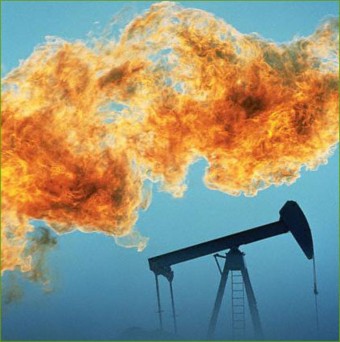CRUDE
names
pyrotechne
tunic
chronic
meat
alchemistry
thrown fire
in law
love's fire
illuminated
tourist
texts
sources
versions
Pliny (II.235): in Samosata (on the Euphrates) there is a pool discharging an inflammable mud called maltha. Naptha is similar flowing like liquid bitumen. "Naphtha is closely related to fire, which leaps upon it from any quarter as soon as it beholds it. With it they say Medea burned her husband's mistress, when fire seized upon her crown as she approached the altars to sacrifice."
One name for crude oil is pyr medikon, i.e. Medean or Median fire. (Medea, or Medes [Persia]).
"Strabo reports that Alexander the Great found at Ekbatana in Media a lake of naphtha which kindled as soon as a flame was brought near it. A street was sprinkled iwth it, and when it was set on fire at one end the flame flashed in an instant to the other end."
In 1624 CE, Heraclius invaded Parthia with his army via Baku, "and in the northwestern oil area destroyed many temples of the fire worshippers who bowed down before the burning natural gas wells."
A record by Ibn Hauqal dating from c. 950 CE comments on the wealth of naft in Northern Persia: "From the holy fire of which black soot is collected which is used as a dye or for the making of black writing ink."
Medea hails from Colchis (now known as Baku), the region between the Black and Caspian Seas, where burning gas wells have been worshipped since the 6th cen. BCE.
A naphtha fountain at Baba Gugur (near Kirkuk) has burned since 600 BCE; it became the first modern oil well in Iraq in 1927.
Herodotus describes a "dark and evil smelling oil the Persians call rhadinace". Ctesias and Apollonius of Tyana reported the fable that this oil was produced by a "white worm" in the River Hyphasis in Punjab.

Visualization of an oil well perforation study, showing the effect of two shape charge explosives set off to perforate the oil-well casing. (Sandia National Laboratories)
source: Partington, A History of Greek Fire 3.
source: R. J. Forbes, Bitumen and Petroleum in Antiquity
27-8.
source: Adrienne Mayor, Greek Fire, Poison Arrows, and Scorpion Bombs
c. 850: introduction of kerosene, manufactured from crude oil by distillation. Muslims called it white naphtha, or naft abyad.
instead of high- volume, continuous-process distillation towers, the medieval Arabs used the al-inbiq, a batch-process still (English "alembic"). three parts: a gourd-shaped lower flask called the cucurbit in which the crude oil was heated; a cooled, spouted condenser that sat atop the cucurbit and received the vapors that rose from the oil; and a receiver at the end of the condenser's spout in which the clear distillate was collected. made of blown glass, ceramic, copper or brass.
Persian-born Muhammad al-Razi (Rhazes) spent most of his adult life in the late 9th century as a physician and chemist in Baghdad. In his Kitab al- Asrar, or Book of Secrets, he mentions the use of naffatah, or kerosene lamps, for heating and lighting. He gives two methods for making kerosene, one using clay as an absorbent and another using sal ammoniac (ammonium chloride). The distillation is to be repeated until the distillate is perfectly clear and "safe to light," meaning that the volatile hydrocarbon fractions had been substantially removed.
Distillation made possible the use of kerosene throughout the entire Middle East, bringing it to such places as Palestine, Yemen, the Hadhramut and Egypt, all of which had substantial deposits of either oil shale or bitumen. With either of these substances, a reasonably good grade of kerosene could be obtained by first extracting the oil by heating the rock, and then distilling the oil in the alembic. Speaking of the shale found around the Dead Sea basin, al-Dimashqi wrote: "The so-called 'stone of Moses's tomb' (may God bless his soul), found east of Jerusalem, releases naphtha when it is broken to pieces and then distilled in the alembic in the same manner as rose-water. When you light this rock it burns like wood."
683: physician named Masarjawah in Basra translated the first medical text ever put into Arabic. Basra was then the largest military camp in the Gulf area. Kitab Qiwa al-'Aqaqir, or The Book of the Powers of Remedies, a collection of herbal recipes taken from a text originally written in Greek by an Egyptian priest and later translated into Syriac. It was in this book that the term "water-white naphtha" was first used in Islamic medicine